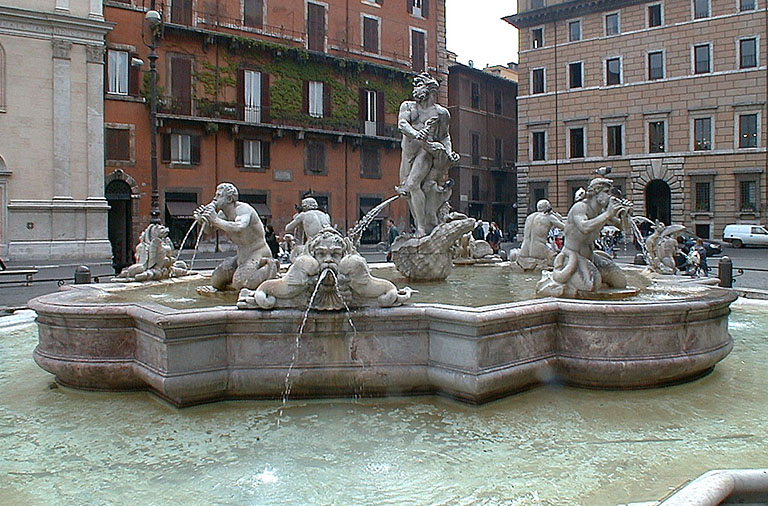WATER IN ROME
February 13th, 2010 posted by
admin

Ever since the earliest times, water has played an important role in the life of the city, a source of health and hygiene, but also part of the classical quest for beauty.
Water flowed constantly into ancient Rome along eleven major aqueducts expertly built by Roman engineers and was distributed to every district in the city. The carefully regulated flow was then piped to fountains, palaces, villas, apartment blocks and arenas not only to quench the population’s thirst but also to supply the cisterns and pools of the many public and private baths. Water was not only a basic necessity but also a decorative element incorporated into the architectural fabric of the city. Monumental cascades, nymphaeums of all sizes, artificial lakes and water-features were highly fashionable then, as later on in Papal times from the fifteenth century onwards. Rome is still today a city of magnificent squares and striking fountains witnessing the ideals of Renaissance beauty to recreate the glory of Antiquity, a constant source of inspiration and renewal.At the time of the Empire over one million Roman citizens had 1000 litres of water available per head per day, and now? The city counts three million inhabitantsand each person has 500 litres of water a day. A real privilege! Visitors to Rome can drink the fresh water at any time from the 2,500 little street fountains called nasoni (big noses), cylindrically shaped and made of cast iron or travertine stone. At home tap water is generally excellent, considered among the best in Italy, according to a recent study on Italian drinking water involving 35 cities.A water sample was taken in Saint Peterʼs Square to check the quality, and the calcium level, hardness, fluoride and sulphate levels, low pollution factors and absence of solvents or metals, make it excellent. “Rome water is good quality and safe” declared Mrs Silvia Castronovi of Altroconsumo, a consumer organisation. The water of Rome is a valuable asset, distributed through 5,600 km of pipes and regularly analysed, by the Roman Water Company ACEA, to certify its quality.